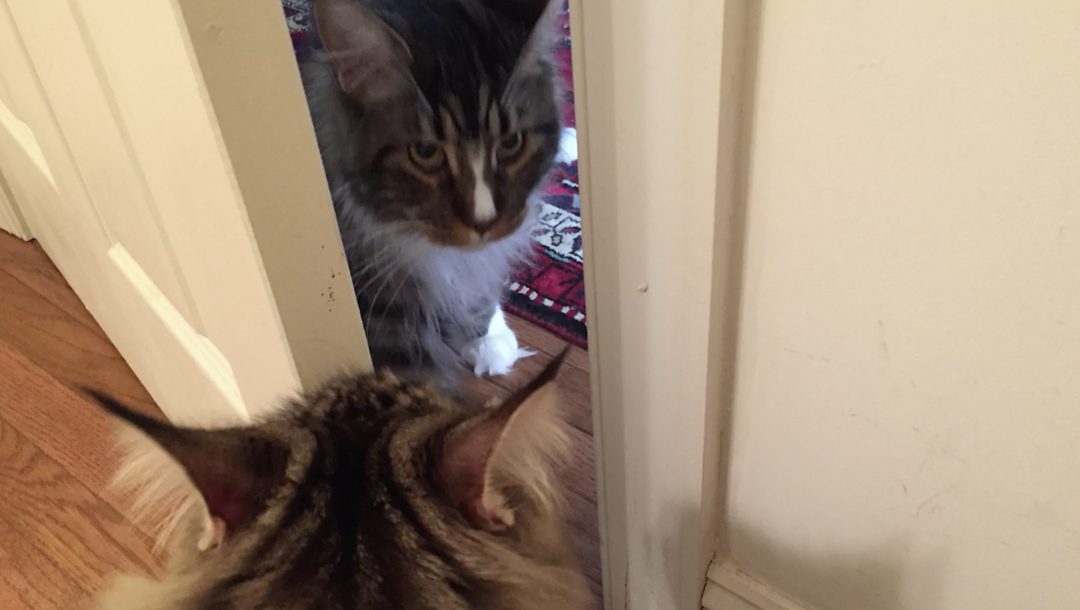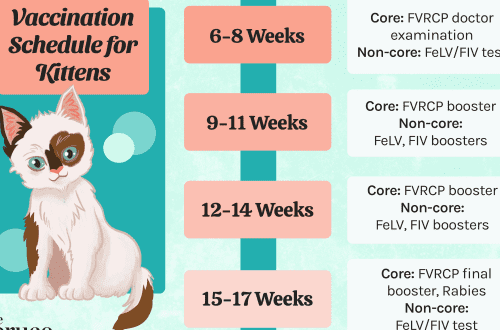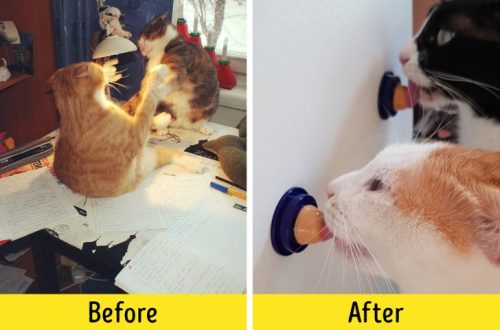
How to introduce a cat to other animals in the house
Introducing a new cat/kitten to the rest of the pets in your home (cat or dog) can be quite stressful. Of course, you want your pets to happily accept a new tenant and everyone lives together, but this is rarely so simple – even if you have got a second cat for the company of the first. Your pets may not be at all inclined to accept a newcomer with open arms! Careful acquaintance will accelerate the achievement of harmony in communication between your pets. If you control the situation, rather than leaving the animals to sort things out on their own, this will increase the chances that the meeting will go smoothly and your pets will get along with each other.
Contents
Introducing cats to each other
Remember that cats do not need social connections – unlike dogs, which are pack animals, they live happily on their own without any social structure. Cats do not tend to feel the need for a friend, even if you would like to have another cat.
You can’t make cats love each other – some of them will easily get along with a new neighbor, while others will never get along or just learn to live next to each other, maintaining a shaky world. You can only try. However, if there is no competition for food or safe resting places (as in most good homes), cats will eventually accept each other, and some animals may even form a close bond. How cats get along with each other depends only on their desire, but you can still influence the success of the operation: it depends on how you introduce them. If the relationship becomes tense or frightening, if the cat feels threatened, it will be very difficult to change her behavior afterwards. Therefore, it is extremely important to introduce the animals carefully and gradually, so that this does not cause an unnecessarily violent reaction.
Here are a few factors that affect the success of the first meeting:
Adult cats or kittens? A kitten poses less of a threat to the first cat than an adult animal, because it has not reached puberty. You can also consider choosing a kitten of the opposite sex to dampen the competition between them. Sterilization helps to solve most of these problems, but not to get rid of them completely. If you are adopting a second adult cat, it is also best to choose an animal of the opposite sex.
Time Choose a time when the house is quiet and calm – avoid introducing cats during holidays, parties, visits from relatives or friends, choose a time when you can give your full attention to your pets and support them.
Smell matters Remember that the sense of smell is the most important of a cat’s senses and the most important for communication and well-being. You can help your new cat fit into your life and not be a “stranger” by mixing her scent with the scent of your home before introducing her to her first cat. To do this, stroke each cat and, without washing your hands, mix the smells. You can also collect the secretion of the glands located on the cat’s head by stroking it with a soft towel, and then wipe all the corners in the house and furniture with this towel. Giving your cat time to get used to the new smells in the house and the smell of the other cat before the first encounter will make them more tolerant. For this reason, it is better to postpone the first acquaintance of cats for a few days or even a week. During this time, keep them in separate rooms, allowing each to explore the habitat and bed of the other in the absence of the owner.
When introducing cats, use a cat pen or carrier Your task is to make sure that both of your pets feel as safe as possible, and that the newcomer is not harassed or aggressive (or has not shown aggression himself). If the first acquaintance is turned into a fight or a chase, problems may arise. The best way to avoid this is to use a special kitten pen when you first meet. It is a metal honeycomb structure approximately 1 m x 0,75 m x 1 m (l/w/h) with a door that can be left open or firmly closed. The cat, being inside, can see everything that happens around, and at the same time feel safe in his shelter.
You can put a blanket on top at first to give your pet even more peace of mind if you see him feeling vulnerable. The pen allows cats to see each other, sniff, meow or hiss without going into direct threats or attacks. The rods allow animals to be close, but at the same time protect them from each other. If you have a kitten, it makes sense to buy a larger pen so that you can keep your pet in it from the very beginning. Using it, you can introduce animals, you can also close the kitten in it by putting its tray and bed inside if you are going to leave and do not want the kitten to face any trouble or danger in your absence. A kitten can be penned up for the night (make sure he has a bowl of water) in the same room with other animals – then they will get used to each other in a calm environment. If you can’t find a pen or crate, use a cat carrier or basket for a first look. Of course, it is too small and cannot serve as a shelter for your cat, and you will not close the cat (kitten) in it for a long time, but it is better than nothing.
How to Use a Carrier or Corral on First Encounter
Place the kitten/cat in the pen/carrier and allow the first cat to enter the room. If you are using a carrier, place it slightly above floor level so that cats do not have direct eye contact – this can cause aggression. When your first cat enters the room, give her attention and encourage her. If the animal decides to leave the room and not get acquainted with a new neighbor, do not force things, remember that the acquaintance procedure may take some time. Perhaps your cat is the type of animal that does not show aggression when meeting a new neighbor, but rather gradually gets used to his presence. If the cats show signs of aggression, distract them with some noise and then praise them for their calm demeanor during the introduction. With treats, you can encourage cats to stay around and be comfortable with each other’s presence. Make their communication positive, let it be accompanied by pleasant events, and not screaming and chasing. If you are using a large pen, after a few days the new kitten/cat has been in it, you can allow the first cat to freely approach it while the cat/kitten is inside, so that they can gradually get used to each other. If you’re using a carrier, you’ll need to be a little more active and schedule more frequent appointments.
In both options, you can start feeding the animals at the same time: the new cat inside the pen/carrier and the first one outside nearby. At first, cats may hiss at each other, but gradually this will turn into curiosity and they will learn to accept each other – this process can take from several days to several weeks, depending on the individual characteristics of the animals.
Face to face meeting
If you feel that your pets are ready to meet face to face, you can again use the food as a distraction. Do not feed your cats for some time so that they are a little hungry, and then at the same time give them food in the same room. Choose a room where the cat could hide behind furniture or jump higher if desired. Let the first cat into the room, and then let the second one come out of the basket and eat. You will need to decide how close to let them get close to each other – don’t try to get them as close as possible from the start. Be calm, cheer up your pets and reward them for good behavior with praise, treats or favorite food. Watch how your pets communicate – they may find themselves a place and curl up to sleep, but you may need to keep the new cat separate from the first one for a while, using feeding time as an opportunity for them to socialize more closely. Once you are sure that your pets will not fight or harass each other, you can give them access to the rest of the house. Most likely, they themselves will find a place for sleep and daily activities that would allow them to live peacefully in the same house and sufficiently enjoy all its benefits – warmth, food and your attention, at the same time gradually getting used to each other.
How much time will it take?
It may take 1-2 days or several weeks for your cats to learn to tolerate each other. It may take several months before your pets begin to feel relaxed in each other’s presence, but if you manage to achieve a state of truce between them, know that you are on the road to success. It’s amazing how cold, rainy weather can get even the worst enemies to warm up next to the fireplace after a hearty dinner.
Acquaintance with the dog
Although it is believed that cats and dogs feud, it is usually much easier to introduce a cat to a dog than to another cat. The animals may be wary of each other at first, but nevertheless they do not see each other as rivals and can get along very well.
If your dog has experience with cats, he will initially be enthusiastic about the arrival of a new neighbor in the house, but then he will get used to his presence and the novelty will quickly dissipate. The dog will begin to perceive the cat as a member of his pack. Many dogs live happily in the same house as a cat and chase all the other cats that wander into your garden, so you need to watch your pets carefully until your cat is accepted as a member of the family. Similarly, if a cat/kitten has had experience with a dog, it is unlikely to feel uncomfortable in a new home for a long time and will quickly get along with the dog.
Safety first
However, safety must come first. You need to keep everything under control until the cat and dog get used to each other. Pet your pets one at a time without washing your hands – this way their scents will blend. Subsequently, the cat will acquire the smell characteristic of the house and become a member of the dog pack. Again, a large paddock is ideal for a first acquaintance – the situation will be under control, and the cat will be safe. Let your dog sniff the new occupant through the bars and get over the initial excitement of the encounter. The cat may hiss, but she is safe. If the pen is large enough, you can leave the cat inside it overnight in the same room where the dog sleeps – this way, your pets will get used to each other within a few days or weeks (depending on how accustomed the dog is to the company of cats) . Some dogs, especially those with no experience with cats that are overly agitated or aggressive, need special attention when introducing themselves to a cat. Keep such a dog as calm as possible, keep it on a leash and make it sit still. The cat should take a safe place in the room and be able to get used to the dog and, if desired, to approach it.
The quieter you go, the further you’ll get
This can take a lot of time and patience, and you’ll also need to reward your dog for good behavior. If your dog has a calm nature or has experience with cats, you can use a sturdy cat carrier when introducing animals. Keep your dog on a leash, place the carrier on a surface above floor level, and let your pets get to know each other. Contacts should be frequent and short. Most dogs soon calm down when they realize that the cat is not of much interest. In the next step, move on to direct animal contact while still keeping the dog on a leash for safety. If your dog is easily excitable, walk him at a fast pace first – he will expend some of his energy and become calmer. Dog breeds such as terriers or greyhounds (they love chasing) are best supervised until they learn that a cat is not a toy. Small puppies get excited at the sight of a cat and may try to “play” with her, which will not delight her at all. chase. Praise your dog for calm behavior, make him sit still, and use treats as a reward. Again, try to associate the presence of a cat with your dog as a reward for calm behavior. When you finally decide to take the leash off your dog, make sure your cat has somewhere to hide (high shelves or furniture) to feel safe. Never leave a cat and a dog alone until you are sure that each other’s company does not pose a danger to them. Cat food will be extremely attractive to the dog, so keep it away from her. Likewise, a dog may be interested in a litter box, so if it encroaches on its contents, keep it away.





